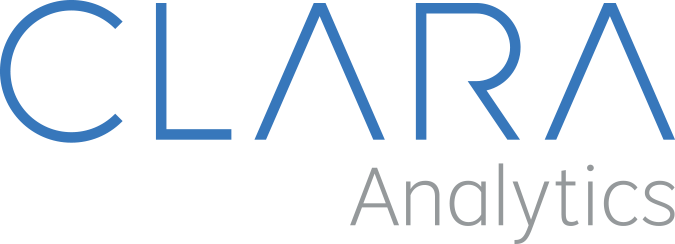A Silicon Valley View on Work Comp
Occupational injuries cost the U.S. more than $250 billion annually. That is nearly three times the financial impact of cancer. Yet to date, the technology and analytics community has largely underserved the challenges of effectively helping injured workers get back to being productive rapidly. Injured workers are being pulled into complex processes unnecessarily. Claims adjusters juggle many balls and are not able to focus their time on what they do best: being a trusted adviser to the injured worker.
The technology and analytics community can make an impact by helping drop combined ratios by more than 20% through better pricing and improved operations. To date, these efforts have been delivered largely through a one-off services model, an approach that works for specific scenarios in which objectives can vary by carrier.
For universal challenges across carrier, the one-off services model is suboptimal, and a product-centric model is recommended to maximize impact. Two such carrier challenges that affect the lives of claims adjusters daily and need special attention are:
- Connecting the injured worker to the right providers. The choice of the provider for a claim makes a big difference to its outcome. From a total cost perspective, a bottom-tiered provider can cost five times as much as a top-tiered provider. Improving the quality of a medical network and directing claims toward better providers can reduce average claim costs by more than 10%. To suggest the right providers, claims adjusters need a solution that ranks providers in a fair, accurate, comprehensive and defensible way. The system also needs to be very easy to use so that the adjuster can come up with the right answer instantaneously when the injured worker calls.
- Reducing claims escalation and focusing the team’s attention. The majority (~75%) of claims are simple and can be fast-tracked. However, the few that are complex (e.g., heading toward litigation or high costs) drive the bulk of the effort. Determining which claims are heading toward a simple outcome and which ones are heading toward complexity is challenging. The ever-changing nature of the claims complicates the situation. The claims team needs a solution that goes through the open claims and helps focus efforts. It needs to be highly accurate, dynamic (i.e., account for the changing nature of the claims) and integrate well into the team’s workflows. In short, the technology solution needs to mirror the dream analyst that every claims team likes to have — the one who is constantly on top of the claims and helps adjusters focus on being a trusted guide to the injured worker.
Why Now?
Analytics, in particular, and technology, in general, have passed through the hype cycle and are now accepted as required parts of the workers’ compensation solution for these reasons:
- Underlying technology platforms are more mature. Claims management systems are being upgraded or replaced industrywide. They are more flexible, comprehensive and integrated than ever before. With this maturity comes the ability to easily connect one system to another and change workflows, an essential ingredient in accelerating change. Uber wouldn’t have happened if payment systems did not connect easily.
- Analytics have started proving value. The advances made on analytical models over the past five to 10 years have started showing clear, tangible results. Underwriting and pricing models have brought down combined ratios dramatically. Additionally, provider scoring models have reduced costs by more than 10% year-over-year, and litigation models have brought down attorney involvement rates by several percentage points. The value of analytics is no longer under scrutiny. The question now is: How can we realize impact?
- Both analytics and technology are essential to attracting new talent. Millennials will not accept archaic, paper-based processes. Most don’t know life without technology, and they treat it as a given. To attract new talent to the workers’ compensation industry, providers need to serve up tools that our future leaders can use and relate to rapidly. There is no alternative.
Why Current Delivery Models Are Obsolete
Most advanced analytics efforts have been one-off projects by internal teams or boutique consulting firms. They are primarily geared toward proving the point but not designed for scale and longevity. They served a purpose while the market was sizing up the value of analytics. However, these services have led to unnecessary redundancy across the industry, and, lacking a long-term strategy, these suboptimal solutions have stalled over time.
Are there exceptions? Sure. There are several models in which the objectives differ from carrier to carrier. For example, pricing models are intricately tied to the strategy of the carrier and will therefore have different goals for each carrier. In carrier-specific models, internal or outsourced analytics projects make sense.
However, for most claims operations, the objective is identical across carriers: reduce the cycle time of processing claims. To solve this challenge comprehensively, carriers need to have a dedicated focus over a long period. It takes hundreds of iterations to get all the pieces in place before one can call the solution complete. What is needed is a product-centric model.
What Is the High-Impact Promise of a Product-Centric Model?
A product-centric model is focused on creating the most robust solution possible across the entire industry. It is about identifying a problem that is common across many customers and then dedicating an R&D effort to it. Differences between customers are handled through configurations, such as switches that can be turned on or off, rather than customization, such as building brand-new models and using different inputs from customers. Product teams focus on select issues and continuously innovate.
A product-centric model delivers:
- A continuously optimized model. Having a team of smart data scientists, engineers and product managers working toward the same goal for an extended period has an almost magical effect. All situations are thought through, and the solution is deep and complete. Experience builds on experience to create an exponentially rich set of features.
- A cost-efficient model. R&D costs can now be distributed across the industry, making the cost for each customer much lower than a one-off solution. This is especially true when considering the total cost of the solution, including design, implementation, maintenance and upgrades.
- A quickly implemented model. The constant refinement of the product makes it as close to plug-and-play as possible. Timelines can be reduced from months to days and minutes.
From our market size estimates, each of these challenges faced today by claims operations represents a $5 billion-and-upward opportunity across the industry. The potential of solving these challenges with advances in technology and analytics is significant from an economics standpoint. More importantly, a product-centric model will empower claims adjusters to do what we set out to do in the first place: “Get injured workers back on track rapidly.”




